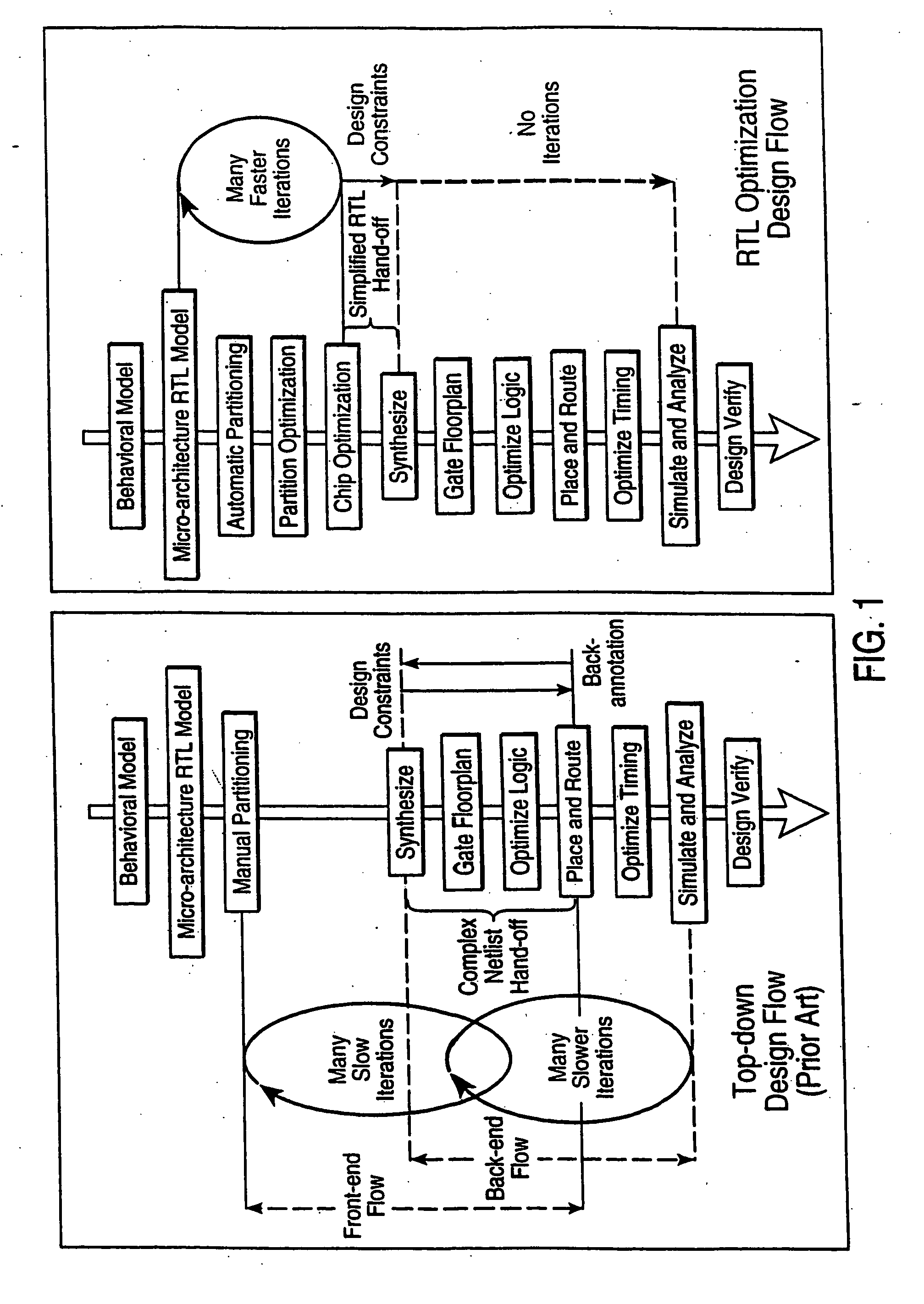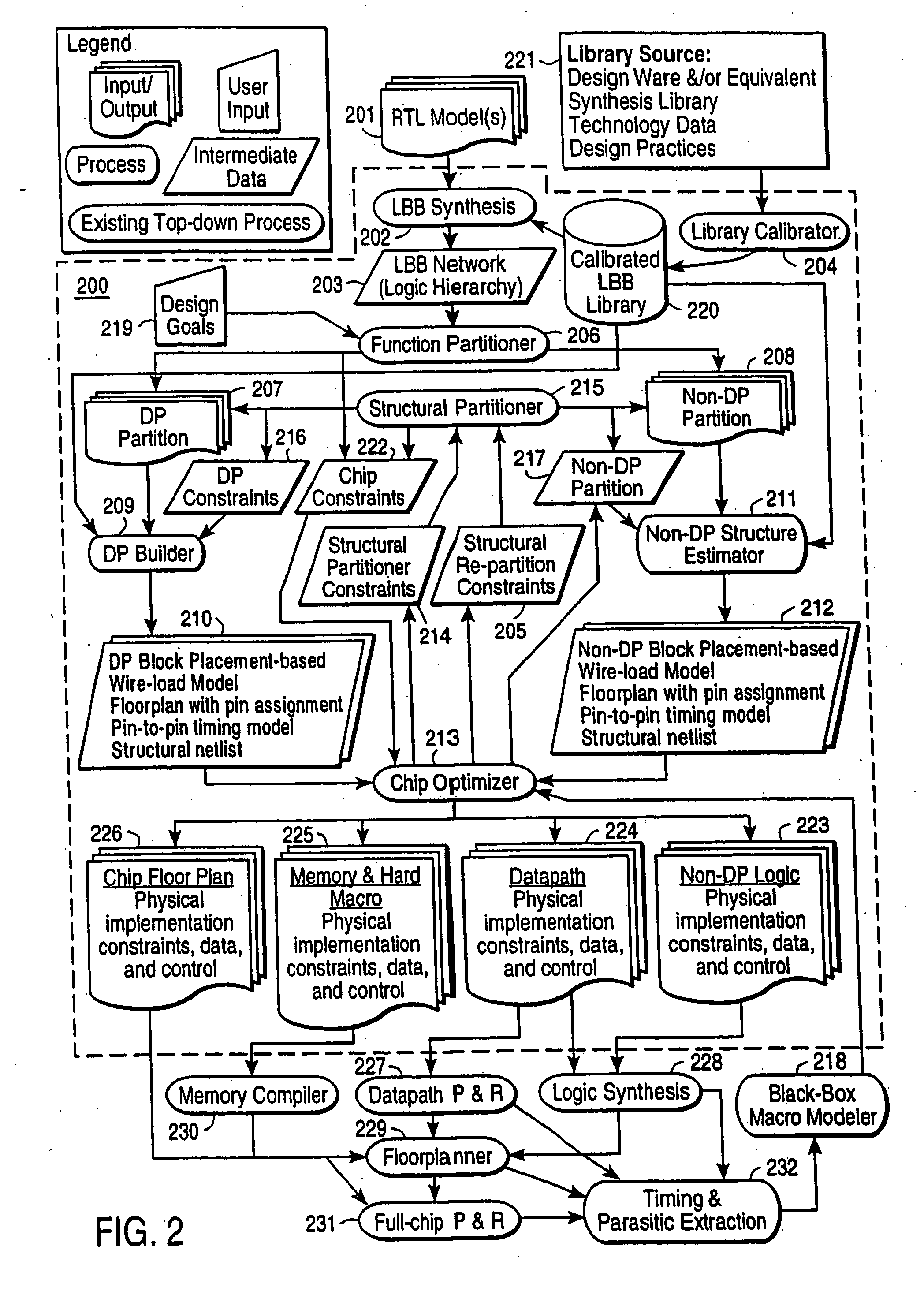Creating optimized physical implementations from high-level descriptions of electronic design using placement-based information
- Summary
- Abstract
- Description
- Claims
- Application Information
AI Technical Summary
Benefits of technology
Problems solved by technology
Method used
Image
Examples
Embodiment Construction
1. Overview of the RTL Optimization Process
[0053] Referring now to FIG. 2 there is shown a data-flow diagram of a RTL optimization system 200 for optimizing an electronic design in accordance with the present invention. The RTL optimization system 200 is designed to converge automatically on the best solution for an electronic design that satisfies the design goals. At the end of the automatic processes provided by the system 200, manual intervention for the purpose of design refinement is allowed.
[0054] The following steps are employed in the RTL optimization system 200: [0055] Synthesize 202 the RTL model to a LBB network [0056] Enter chip-level design goals 219[0057] Functional partitioning 206[0058] Feasible block-level implementation 209&211[0059] Chip optimization 213[0060] Structural partitioning 215[0061] Chip re-optimization 213 (2nd pass)
[0062] The system 200 operates on a conventional computer system, such as an Intel based personal computer using the Microsoft Corp.'...
PUM
 Login to View More
Login to View More Abstract
Description
Claims
Application Information
 Login to View More
Login to View More - R&D
- Intellectual Property
- Life Sciences
- Materials
- Tech Scout
- Unparalleled Data Quality
- Higher Quality Content
- 60% Fewer Hallucinations
Browse by: Latest US Patents, China's latest patents, Technical Efficacy Thesaurus, Application Domain, Technology Topic, Popular Technical Reports.
© 2025 PatSnap. All rights reserved.Legal|Privacy policy|Modern Slavery Act Transparency Statement|Sitemap|About US| Contact US: help@patsnap.com



